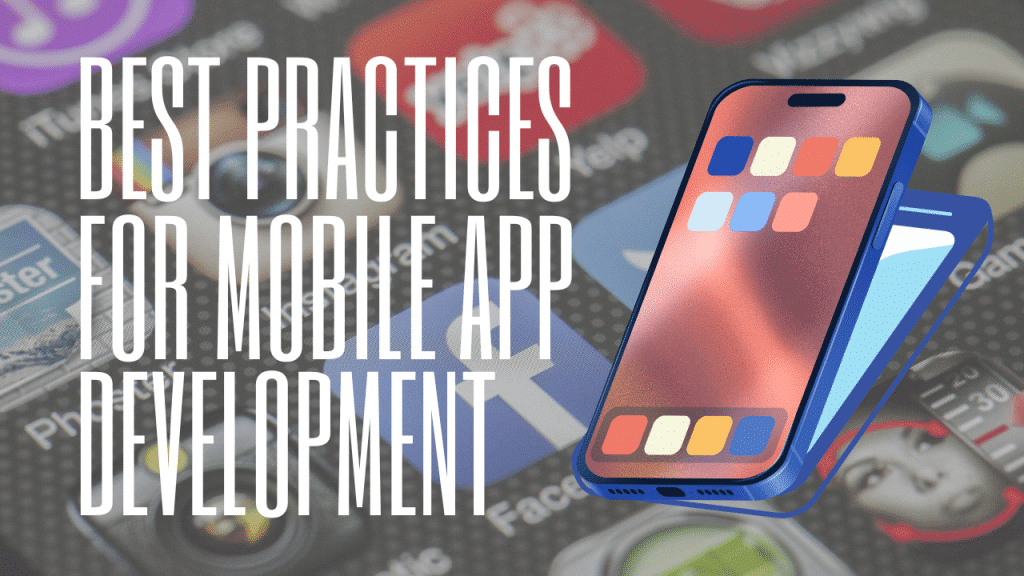In the fast-changing digital environment of today, businesses confront the need to adjust, create, and evolve. Digital transformation is no longer a buzzword; it’s a strategic necessity for survival and growth. As business leaders and decision-makers grapple with this paradigm shift, mobile app development emerges as a powerful catalyst for driving transformation.
I. Introduction
The Mobile Revolution: Beyond Convenience
Mobile devices have become common companions in our daily lives. From smartphones to tablets, these pocket-sized powerhouses connect us to information, services, and experiences like never before. But the impact of mobile extends far beyond convenience. It reshapes industries, redefines customer interactions, and drives organizations toward a digital-first future.
The Unexplored Terrain: Mobile Apps and Transformation
While mobile apps are often associated with consumer-facing experiences—shopping, social media, and entertainment—their potential for business transformation remains underexplored. Beyond the flashy interfaces lie opportunities to revolutionize internal processes, enhance customer engagement, and unlock data-driven insights.
Unique Perspectives: Going Beyond the Obvious
In this article, we dig deeper into the less-discussed aspects of mobile app development’s role in digital transformation. Rather than reusing the familiar benefits, we’ll explore nuanced insights that can shape your organization’s mobile strategy. Whether you’re a seasoned technology enthusiast or a business owner navigating the digital landscape, this article aims to provide fresh perspectives and actionable takeaways.

Designing an interface is more than just aesthetics, but focusing on user needs.
II. Understanding Digital Transformation
Before we dive into the specifics, let’s clarify what digital transformation requires. It’s more than adopting new technologies; it’s a holistic shift in mindset, processes, and culture. Digital transformation incorporates:
- Strategic Alignment: Aligning technology initiatives with business goals.
- Customer-Centricity: Placing the customer at the heart of every decision.
- Agility and Adaptability: Embracing change as a constant.
- Data-Driven Insights: Leveraging data for informed choices.
- Operational Efficiency: Streamlining workflows and eliminating bottlenecks
III. Mobile App Development as a Catalyst
Mobile apps act as accelerators in this transformation journey. Here’s why:
- Always Within Reach: Mobile devices are an extension of users’ bodies. Apps reside in their pockets, ready to engage anytime, anywhere.
- User-Centric Experiences: Well-designed apps prioritize user needs, enhancing engagement and loyalty.
- Data Collection and Analysis: Apps collect valuable data on user behavior, preferences, and pain points.
- Process Optimization: Internal apps streamline operations, reducing manual effort and errors.
IV. Key Benefits of Mobile App Development in Driving Transformation
Let’s explore the specific advantages of mobile app development:
1. Improved Customer Engagement
Mobile apps bridge the gap between businesses and customers. Personalized experiences, push notifications, and loyalty programs foster deeper connections.
2. Streamlined Processes
Internal apps automate tasks, improve collaboration, and boost productivity. From inventory management to employee onboarding, apps optimize workflows.
3. Data-Driven Insights
App analytics provide actionable insights. Understand user behavior, identify trends, and make informed decisions.
4. Agile Adaptation
Apps evolve with your business. Updates, feature enhancements, and scalability ensure agility.
V. Challenges and Considerations
While mobile app development holds immense promise, it also presents unique challenges and considerations. As organizations embark on their digital transformation journey, they must navigate these complexities:
1. Security and Privacy
The challenge: Balancing convenience with while keeping data safe.
Considerations: Mobile apps can involve handling sensitive data such as user profiles, payment information, and proprietary business data. Striking the right balance between seamless user experiences and ensuring user data is secure and private through robust security protocols is critical. Incorporating Encryption, secure APIs, and regular security audits are essential.
2. Platform Diversity
The challenge: Choosing between iOS, Android, or going for multi-platform development.
Considerations: iOS and Android dominate the mobile landscape today. Developing for both platforms requires knowledge of their platform development languages (Objective-C, Swift for iOS and Java, Kotlin, etc. for Android). Cross-platform frameworks promise efficiency such as React Native and Xamarin.
3. User Experience (UX)
The challenge: Ensuring seamless and intuitive user journeys.
Considerations: Users demand frictionless experiences. Mobile apps must align with user expectations, offer intuitive navigation, and minimize cognitive load. Design consistency across platforms enhances usability.
4. Maintenance and Updates
The challenge: Continuous improvement for apps.
Considerations: Mobile apps aren’t static; they evolve. Regular updates address bugs, enhance features, and adapt to changing user needs. Organizations must allocate resources for maintenance, bug fixes, and feature enhancements.
5. App Performance
The challenge: Optimizing speed and responsiveness.
Considerations: Slow-loading apps frustrate users. Improving performance by minimizing load times, reducing battery drain, and optimizing memory usage is crucial to keep apps performing without straining the device it is being used on. Rigorous testing across different devices and network conditions before launch or releasing updates is essential to prevent performance issues from affecting end users.
6. Integration Challenges
The challenge: Seamless connections with required and third-party systems.
Considerations: Mobile apps rarely operate in isolation. Integrating with the backend system, APIs, and third-party services pose challenges. Compatibility, data synchronization, and carrying out real-time updates require careful planning and coordination to ensure functionality across connected systems is not compromised.
7. User Adoption and Change Management
The challenge: Reducing the resistance to app adoption.
Considerations: Employees and customers may resist change. Effective change management involves effective communication and may include instructing for use and highlighting app benefits to ease the transition to using a new app or transitioning from an older version of the app.
8. Budget Constraints
The challenge: Balancing costs with value.
Considerations: Mobile app development isn’t cheap. Organizations must allocate budgets wisely. Prioritize features that align with business goals and deliver tangible value. Consider long-term ROI.
In overcoming these challenges, organizations can harness the true potential of mobile app development as a driving force behind their digital transformation.
VI. Best Practices for Mobile App Development
Adopting best practices becomes paramount as organizations embrace mobile app development to fuel their digital transformation. Let’s explore actionable strategies for creating effective mobile apps:
1. User-Centric Design
Summary: Prioritizing user needs and preferences.
Insight: Begin by understanding your target audience—both end-users and internal stakeholders. Conduct user research, create personas, and map out user journeys. Design interfaces that align with user expectations, ensuring intuitive navigation and delightful interactions.
2. Implement Agile Development
Summary: Iterative development cycles for rapid progress.
Insight: Agile methodologies—Scrum, Kanban, or a hybrid approach—allow flexibility and adaptability. The process breaks down features into smaller tasks, improves collaboration across teams, and incremental updates. Regular feedback loops ensure course correction and allow changes to be incorporated more effectively.
3. Testing and Quality Assurance
Summary: Ensuring bug-free and reliable apps.
Insight: Rigorous testing is a must. Perform functional, usability, security, and performance testing to minimize, if not eliminate, errors. Invest in automated testing tools to catch regressions early. Beta testing with real users provides valuable insights.
4. Analytics and Optimization
Summary: Continuously improving app performance.
Insight: Implement robust analytics tools (e.g., Google Analytics, Firebase) to track user behavior, conversion rates, and app usage. Leverage A/B testing to optimize features, UI elements, and user flows. Data-driven decisions lead to better outcomes.
5. Cross-Platform Considerations
Summary: Balancing native vs. cross-platform development.
Insight: Choose the right approach based on your audience, budget, and timeline. Native apps offer superior performance but require separate development for iOS and Android. Cross-platform frameworks (e.g., React Native, Flutter) streamline development but may sacrifice some native feel.
6. Security by Design
Summary: Prioritizing security from the outset.
Insight: Bake security into your app architecture. Use secure APIs, encrypt sensitive data, and follow OWASP guidelines. Regularly audit code for vulnerabilities. Educate your development team on secure coding practices.
7. Scalability and Performance
Summary: Future-proofing growth.
Insight: Anticipate scalability requirements. Optimize database queries, minimize network requests, and cache data intelligently. Ensure your app performs well under varying loads and network conditions.
8. Collaboration Across Disciplines
Summary: Bridging the gap between design, development, and business.
Insight: Effective communication is key. Involve designers, developers, product managers, and stakeholders from the outset. Regular sync-ups ensure alignment, prevent silos, and lead to cohesive app experiences.
Remember, successful mobile app development isn’t just about code—it’s about creating value for users and driving meaningful transformation. By adhering to these best practices, your mobile apps can be powerful enablers of your digital journey.
VII. Conclusion
Mobile app development emerges as a beacon of innovation and progress in the dynamic digital transformation landscape. As we conclude our exploration of this topic, let’s recap the key takeaways and consider the transformative power of mobile apps:
1. Empowering User-Centric Experiences
Mobile apps bridge the gap between businesses and their users. Whether it’s a customer browsing an e-commerce app or an employee accessing an internal tool, the app experience shapes perceptions and interactions. By prioritizing user-centric design, organizations can create meaningful connections that drive loyalty and engagement.
2. Data as the New Currency
Mobile apps are data goldmines. Every tap, swipe, and interaction generates valuable insights. Organizations that harness this data effectively gain a competitive edge. From understanding user behavior to predicting trends, mobile apps provide a wealth of information. However, responsible data handling and privacy protection are non-negotiable.
3. Agility in Action
Agile development methodologies allow organizations to adapt swiftly. The iterative nature of app development enables course correction, feature enhancements, and responsiveness to changing market demands. Embracing agility ensures that your app remains relevant and valuable over time.
4. Security: A Non-Negotiable Priority
Security breaches can cripple businesses. Mobile apps must be fortified with robust security measures from the outset. Encryption, secure APIs, and regular audits are essential. Balancing convenience with security is a delicate dance—one that organizations must master.
5. The Human Element
Behind every app lies a team of designers, developers, and stakeholders. Effective collaboration across production teams and ownership ensures that the app aligns with business goals and user needs. Bridging the gap between design, development, and business strategy is crucial for success.
6. The Road Ahead
As technology evolves, so will mobile app development. Augmented reality, machine learning, and 5G connectivity are poised to reshape the app landscape. Organizations must stay informed, experiment with emerging technologies, and remain adaptable.
In conclusion, mobile app development isn’t just about lines of code; it’s about shaping experiences, solving real-world problems, and driving transformation. As business leaders, technology enthusiasts, and decision-makers, let’s embrace the mobile advantage and propel our organizations toward a digital-first future.
Remember: The true magic of mobile lies not in the device itself but in the lives it touches, the problems it solves, and the connections it fosters.




